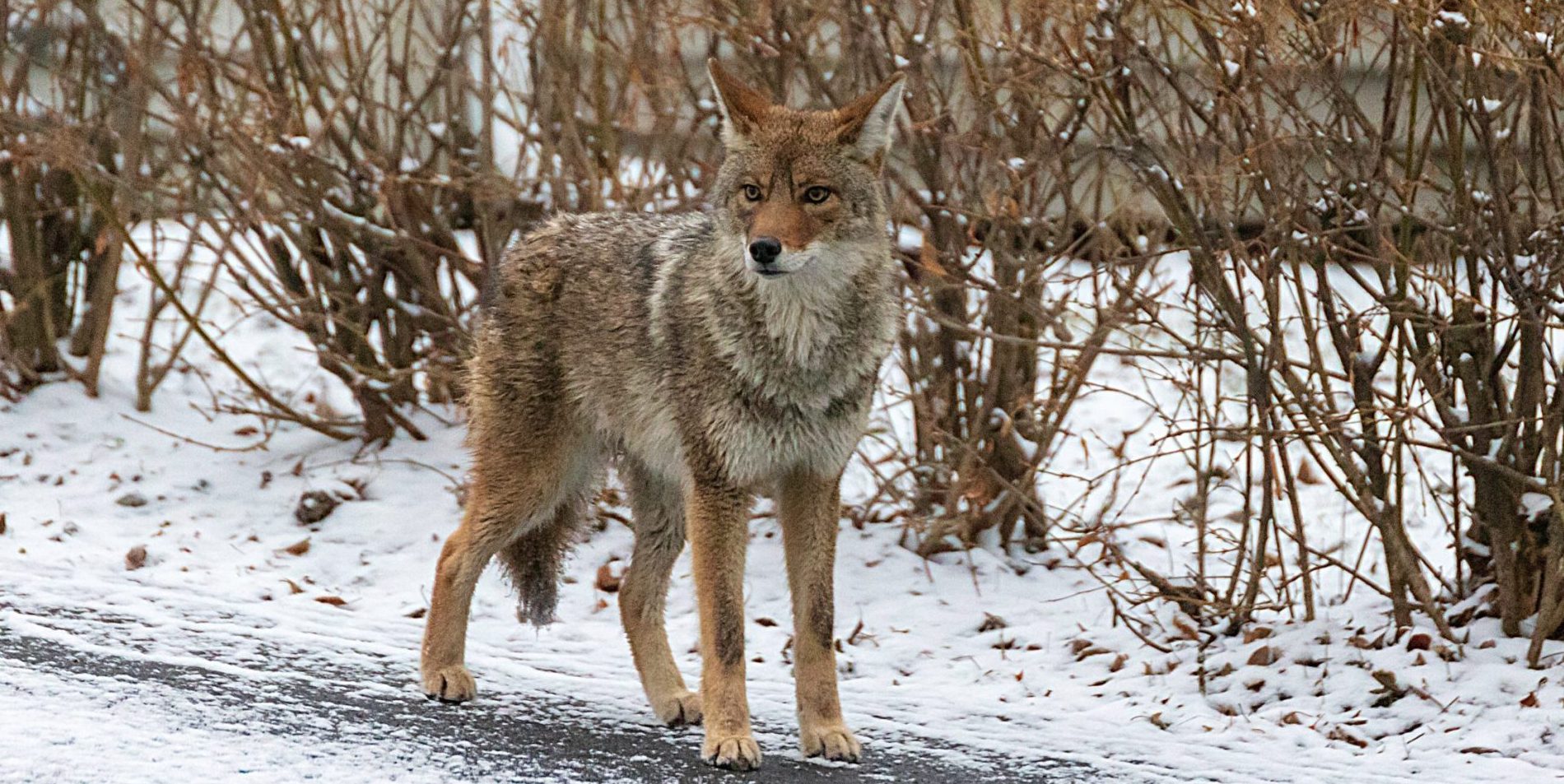Watch out for young urban coyotes on the move this winter in Brampton
Published October 28, 2024 at 1:34 pm

Don’t be alarmed if you catch a glimpse of some scrappy young coyotes moving around Brampton as they look for a warm place to den during the winter.
October is the start of coyote dispersal season – a time of year when juvenile coyotes leave their families and search for their own space to call home.
Coyotes are usually between six to nine months old when they head out on their own and can move closer to developed areas, leading Brampton Animal Services to remind residents to be aware of the wildlife they share the city with.
Coyotes can be easier to spot in the winter because there is less foliage to provide cover and snow tracks may reveal their movement in the area. And while they’re usually more active at dawn and dusk, colder weather and reduced daylight can increase coyote activity during the daylight hours.
“As food becomes scarcer in natural environments, coyotes may wander into residential areas in search of food,” Brampton Animal Services says.
Dispersal season lasts until February, and Brampton Animal Services says most coyotes sightings are related to food and water sources, or protecting their families by watching for threats. They’re mostly concerned about keeping other coyotes away from their dens, but because dogs and coyotes are so similar they may see dogs as competition, a threat, or even food.
This summer the city warned residents not to feed wild animals after Brampton Animal Services found ice, cat food, chicken wings and other food left out to feed local coyotes. Feeding wildlife goes against city bylaws and can lead to dangerous interactions that can impact both animals and residents, Brampton Animal Services says.
“Residents are urged to avoid feeding wildlife, even unintentionally, as it increases the risk of attracting coyotes. A coyote that becomes accustomed to human-provided food may lose its natural fear of humans, increasing the potential for conflict,” the city says.
The city says one of the best ways to prevent a coyote encounter is to make sure no food is available for them or their usual prey, like rabbits, squirrels, mice and rats. Residents are urged to properly dispose of any food waste including unsecured garbage, pet food left outdoors, birdseed and compost.
What to do if you encounter a coyote:
- Stay calm: It might feel difficult, but if you’re in the community and are approached by a coyote, remain calm
- Do not run away: Running away from a coyote may encourage them to follow you
- Make yourself loud and large: If a coyote continues to approach you, make gestures and use objects to startle the coyote into running away – do not chase or touch the animal
- Call 9-1-1: Seek help if scaring the animal fails to avert danger.
Here are some tips to help safely share the city with coyotes:
- Dispose of waste properly and avoid littering
- Do not leave pet food bowls or water bowls outdoors
- Do not feed wildlife
- Remove clutter from your yard
- Keep cats indoors
- Be respectful of their habitats and exercise caution if a coyote is seen
- Do not approaching coyotes
- Keep pets on leashes
- Always supervise your pets outdoors, even in your backyard
